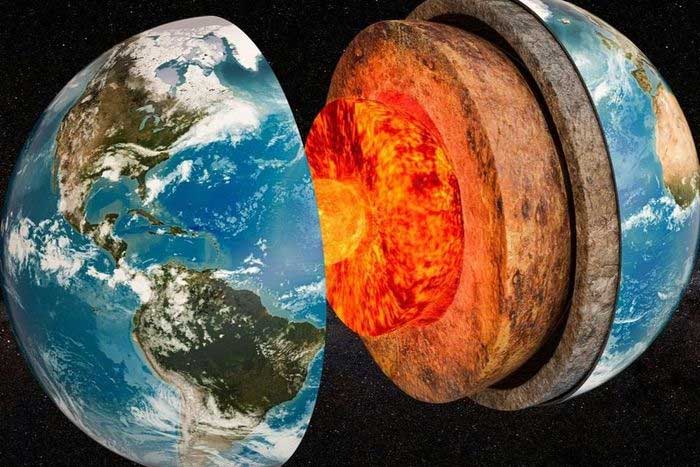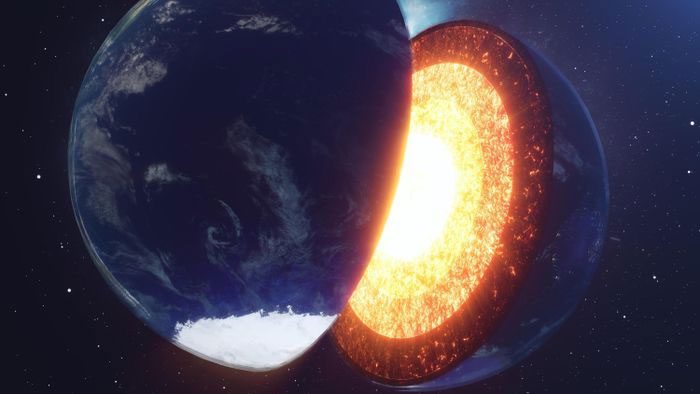The solid inner core of the Earth is covered by an outer layer composed of liquid. This allows the solid core to rotate at a different speed than the rotation of the Earth.

Earth’s Layers. (Image: Canva).
Measurements and calculations indicate that the solid inner core of the Earth has been slowing down in recent decades, according to the Guardian.
This discovery helps explain the changes in day-night length and variations in the Earth’s magnetic field.

The solid inner core of the Earth is predicted to rotate slower than the outer liquid core. (Image: New York Times).
The solid inner core of the Earth is covered by an outer layer made of liquid. Previously, the rotation speed of the solid core was faster than that of the liquid core.
However, over the past few decades, the solid core has gradually slowed down and is tending to rotate slower than the liquid outer layer.
The rotation of the solid core is influenced by the magnetic field generated in the outer core, while being balanced by gravitational effects in the Earth’s mantle.
By analyzing the seismic waves from earthquakes that pass through the inner core, researchers can calculate how the rotation speed of the inner core has changed since the 1960s.
Scientists have found that seismic waves tend to oscillate in a similar cycle since around 2009, indicating that the rotation of the inner core has paused. Data show that a similar phenomenon occurred in the early 1970s.
This new discovery, published in the journal Nature Geoscience, helps scientists better understand the interactions between different layers of the Earth.
At the same time, the study somewhat indicates the impact that processes deep within the Earth may have on the surface, including the gradual increase in the length of days. Specifically, since 2020, each year has been lengthening by 1/1000 of a second.




















































